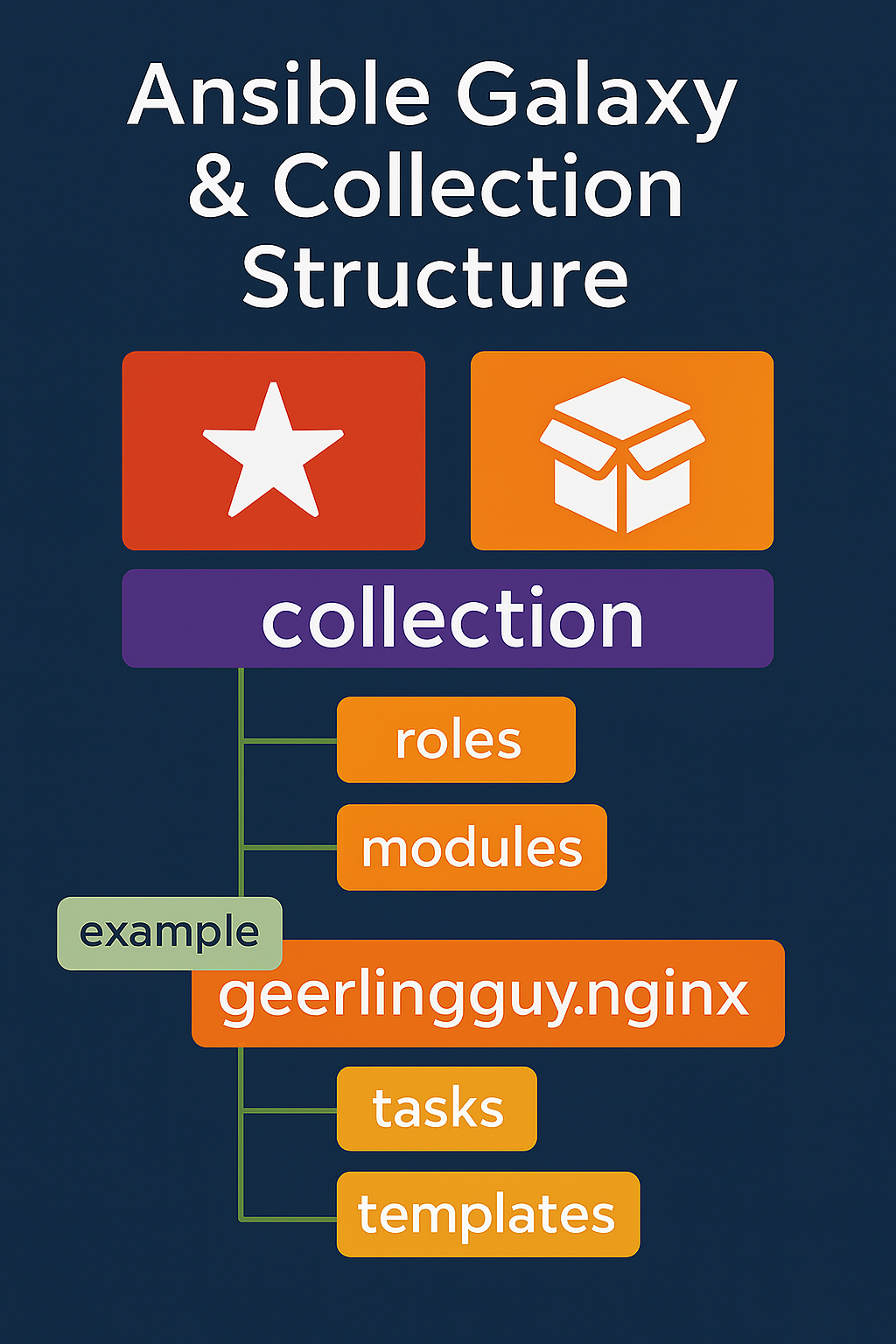🧱 Understanding Ansible Architecture: Simplicity at Scale
 Vikram
VikramTable of contents
- 🧩 Key Principles of Ansible Architecture
- 🔧 Architecture Overview
- 🖥️ 1. Control Node
- 🖥️ 2. Managed Nodes
- 📄 3. Inventory
- 📘 4. Playbooks
- ⚙️ 5. Modules
- 🧩 6. Plugins
- 📦 7. Roles & Collections
- 🔐 8. Ansible Vault
- 🌐 Ansible Tower / Automation Controller
- 🧭 DevOps Pipeline Integration
- ✅ Summary Table
- 🧠 Final Thoughts
- 📦 Optional Resources

In the Devops world, Ansible is known for its agentless, simple, and powerful approach to automation. This post breaks down Ansible’s architecture, explaining each core component along with real-world commands and supporting visuals.
🧩 Key Principles of Ansible Architecture
✅ Agentless (via SSH or WinRM)
✅ Push-based execution
✅ Human-readable YAML
✅ Modular and extensible
🔧 Architecture Overview
At the heart of Ansible lies its control node, which manages target managed nodes using playbooks, inventories, and modules.
🖥️ 1. Control Node
The Control Node is where you install and run Ansible.
🔸 Key responsibilities:
Store playbooks, roles, configs
Execute automation across infrastructure
✅ Common Commands:
# Install Ansible on the control node
sudo apt update && sudo apt install ansible -y
# Check Ansible version
ansible --version
🖥️ 2. Managed Nodes
These are the target systems Ansible automates. They don’t require Ansible installed, just SSH access.
✅ Test connection:
# Ping a managed node
ansible all -i inventory.ini -m ping
📄 3. Inventory
Inventory is a list of hosts managed by Ansible, defined in an INI, YAML, or dynamic file.
✅ Sample Inventory:
[web]
192.168.1.10
192.168.1.11
[db]
192.168.1.20
✅ Run a command using inventory:
ansible web -i inventory.ini -m shell -a "uptime"
📘 4. Playbooks
Playbooks define what Ansible does using YAML syntax.
✅ Sample Playbook:
- name: Install Nginx
hosts: web
become: true
tasks:
- name: Ensure Nginx is installed
apt:
name: nginx
state: present
✅ Run the playbook:
ansible-playbook -i inventory.ini nginx-install.yml
⚙️ 5. Modules
Modules are Ansible’s building blocks. They perform specific tasks like package management, file manipulation, service control, etc.
✅ Examples:
# Using the 'apt' module
ansible all -i inventory.ini -m apt -a "name=nginx state=present" --become
# Using the 'copy' module
ansible all -i inventory.ini -m copy -a "src=/etc/hosts dest=/tmp/hosts"
🧩 6. Plugins
Plugins enhance Ansible’s behavior.
Connection Plugins – SSH, WinRM, Docker, etc.
Callback Plugins – customize output/logging
Lookup Plugins – pull dynamic variables
You don’t run plugins manually, but they are used automatically or configured in ansible.cfg.
📦 7. Roles & Collections
Roles organize playbooks into structured components.
Collections are packages of modules, roles, and plugins.
✅ Use Galaxy to install roles:
ansible-galaxy install geerlingguy.nginx
✅ Run a role-based playbook:
- hosts: web
roles:
- geerlingguy.nginx
🔐 8. Ansible Vault
Use Ansible Vault to encrypt sensitive data.
✅ Commands:
# Encrypt a file
ansible-vault encrypt secrets.yml
# Decrypt a file
ansible-vault decrypt secrets.yml
# Run playbook with vault password prompt
ansible-playbook secure-playbook.yml --ask-vault-pass
🌐 Ansible Tower / Automation Controller
Ansible Tower (now Automation Controller) is the UI/API layer provided in Ansible Automation Platform, offering:
Centralized job control
RBAC (Role-Based Access Control)
REST API & Webhooks
Visual dashboards
🧭 DevOps Pipeline Integration
Ansible integrates smoothly into DevOps workflows:
Git for version control
Jenkins/GitLab CI for CI/CD
Monitoring tools for post-deploy actions
✅ Summary Table
| Component | Purpose | Command Example |
| Control Node | Executes playbooks | ansible-playbook site.yml |
| Managed Nodes | Targets of automation | ansible all -m ping |
| Inventory | Hosts list | inventory.ini |
| Playbooks | YAML task definitions | ansible-playbook nginx.yml |
| Modules | Individual task units | ansible all -m apt -a ... |
| Plugins | Extend functionality | Used automatically |
| Roles/Collections | Reusable packages | ansible-galaxy install ... |
| Vault | Secure secrets in playbooks | ansible-vault encrypt ... |
🧠 Final Thoughts
Ansible’s architecture is the perfect balance between simplicity and power. It automates everything from provisioning and configuration to orchestration, with no agents, minimal setup, and clean, readable YAML.
“Simple doesn’t mean limited. With Ansible, simplicity scales.”
📦 Optional Resources
Subscribe to my newsletter
Read articles from Vikram directly inside your inbox. Subscribe to the newsletter, and don't miss out.
Written by



